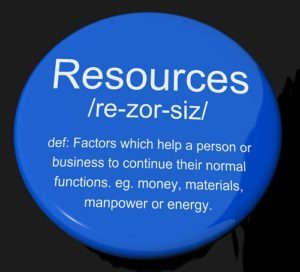In the past, public relations professionals have gotten a bad reputation among journalists and even marketers. PR folks have been seen as spin doctors that flood the inboxes of time-starved reporters with irrelevant press releases and overly promotional content that’s of little value to anyone.
The press, meanwhile, has their own set of outdated, preconceived stereotypes that aren’t warranted to represent their profession as a whole either…
While some stereotypes arguably exist for a reason, these biases don’t really apply to either profession, at least not in most of today’s industry.
As an inbound marketing mindset has overtaken outdated outbound tactics, innovative media relations strategies have begun to replace past perceptions of public relations. These innovative strategists have gone on to improve our image – and prove we actually work best collaborating with influencers and the media.
In the field of communications, it’s all about communication; find out what the other half wants, what they don’t want, and how you can both help one another.
We always believe open collaboration yields the best results, so that’s why my team at Fractl went out and asked 1,300 publishers how they wanted to be communicated with by media relation professionals. After digging through the depths of several very long Excel spreadsheets, here are three valuable lessons in influencer and media relations, straight from the publishers themselves.
Lesson 1: Do Your Research
One repetitive theme that dominated the survey was the general consensus among publishers that they absolutely despise PR folks that don’t do their research. Nearly 70% of respondents said pitches irrelevant to their beat was one of the most common reasons they declined.
So how do you create the perfect pitch list? Once you’ve identified the attributes of your ideal audience (i.e. their demographics, location, interests, challenges, etc.) you probably will have a better idea of where they frequent online – and that’s where you want your relevant content.
Track down influencers
The influencer marketing bandwagon really picked up speed in 2016, and with good reason. Just like a peer recommendation is more valuable than an ad, influencers are essentially the ultimate word of mouth marketing. At its best, a trusted key figure with a highly engaged, concentrated audience promotes your brand in their own voice and in ideal cases, they become brand ambassadors.
Influence comes in all forms, so don’t be afraid to venture beyond the big-name celebrities. In fact, some of the most influential figures in many verticals don’t have millions of social followers and instead focus on a tight-knit, loyal community built on the trust and authority of a key leader.
Look to popular journalists, bloggers, entrepreneurs, community leaders, and educators with engaged followings that match your ideal audience persona. Most importantly, focus on building a partnership and rapport with these influencers for future collaborations.
Analyze ideal publications
Similar to influencers, publications and the media also have established a trustworthy and authoritative image to their audiences. Find out the types of publications relevant to your content and brand they read daily or turn to when they have a question or problem, either through a survey or audience persona profile.
Once you have a list of publications that your audience frequents and is relevant to your content, seek out the best point of contact.
Go through their author archive, social profiles, previous publications– trace any and every digital footprint of a target before even beginning to write your pitch. Try to target to whom the pitch would have the most appeal, don’t blindly pitch the entire editorial contact list at a publication or the editor-in-chief of a major publisher.
Questions to consider
Once you find the best fit influencers and writers, you’ll want to run through a basic mental checklist before adding them to your list build.
- Do they see a lot of engagement?
- Do they post any third party content?
- Do they post content similar to what you’re about to pitch?
- Do they demonstrate similar values as your brand?
Typically, research should be the most time-consuming aspect of outreach, especially when you’re still in the process of trying to establish longer-term relationships with the influencers and the press.
Lesson 2: Grab Their Attention With a Good First Impression
Considering 57% of top-tier publishers receive between 50 and 500 pitches per week, it’s beyond necessary you stand out in an inbox constantly receiving new pitches every single hour. So how do you make the best first impression that grabs their attention?
There are only two things that will set you apart in an inbox: your name, and your subject line.
Unfortunately it can be difficult to get them to click open solely on your name if it’s a cold contact (though once you build a relationship with the right contacts, your name holds much more merit). By process of elimination, that means subject lines hold a lot of weight. In fact, half said it’s the most important factor for opening emails.
Subject lines
After sending countless pitches, I’ve personally realized subject lines matching their style of writing seem to get responses more often than not, and our survey ultimately supports this. Check out their style of writing headlines.
Do they include a lot of fact-loaded, statistic-based headlines or do they use an information gap to catch their readers’ attention? Typically news organizations go with the former while beats like business and finance go with the latter.
Some verticals especially are receptive to more conversational pitches, so a personalized subject line based on the information you find while list building and researching the author can be the golden key to grabbing their attention.
It may come off as borderline professional stalking, but 3 out of 10 writers surveyed across all beats said they’d be most likely to open a personalized email compared to other types of subject lines, and would feel more compelled to read the pitch in its entirety.
Lesson 3: Prove Your Value
Going back to the top pet peeve of the media, failing to prove your value falls hand in hand with proving your relevancy. Explaining how the content benefits them and their audience (not your brand) is a huge but often overlooked aspect of pitching influencers and the press. Respect their time, keep the email straight-forward, and be sure to include the following to prove your value.
- Credibility: Include the methodology or data source in which your content was created to establish its credibility.
- Newsworthy: Mention the timeliness of the data or how the content related to a recent headlining story to highlight its newsworthiness.
- Relevancy: Present the most compelling facts specific to that publication’s audience to prove its relevancy.
- Proof: Don’t forget to link to the finalized content so they can determine for themselves if it’s truly valuable to their readership.
Further, keeping it brief is key – half of publishers prefer a pitch with a cursory explanation of 100 to 200 words. In most cases anything else is overkill.
Gradually, both sides are beginning to realize the mutual benefits of this symbiotic relationship between publicists, influencers, and the media. Remember, your brand can produce some of the most innovative, cutting edge content, but it means absolutely nothing if it doesn’t make its way to the right audience. Nurture these delicate relationships between to help your brand earn the coverage it deserves.
Business & Finance Articles on Business 2 Community(29)






